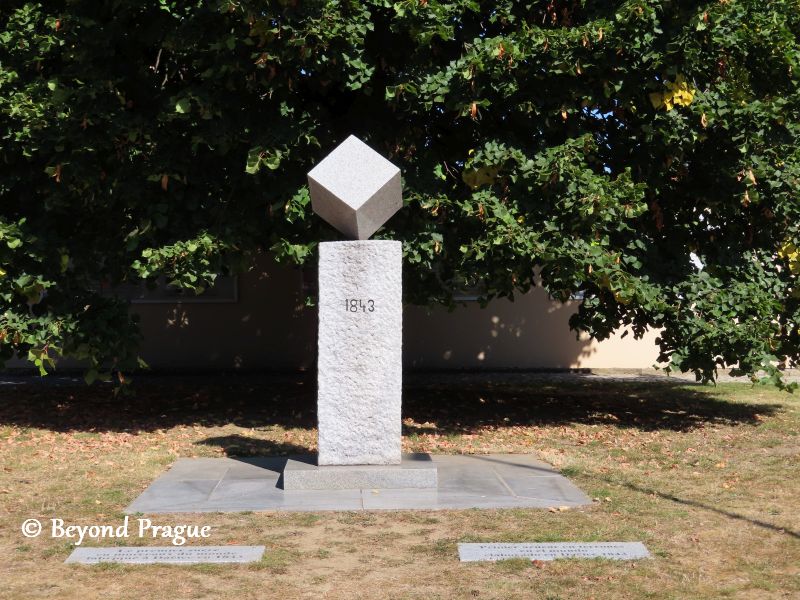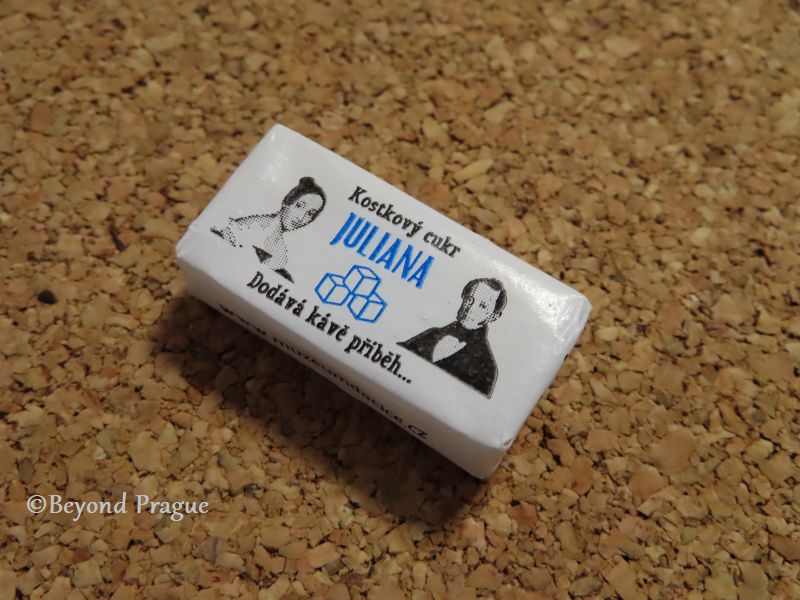Southern Sweet Spot
Dačice is a town of a little over 7,000 people in South Bohemia, roughly 15 kilometers from the border with Austria.
While the town is not touristy, it is home to a distinctive blue chateau that is an interesting example of a transitional architectural style between Classicist and Empire movements.
The town also has the distinction of being the place where the sugar cube was invented. Not far from the chateau, you’ll find a monument commemorating the invention of the sugar cube in 1843.
Let’s take a closer look at Dačice chateau:
Through Many Years and Many Hands
As it is with many chateaus and castles, Dačice chateau saw many changes in ownership before it was taken over by the state in 1945.
Design and construction of the chateau was ordered by Oldřich Krajíř (1561-1600) , of the noble Krajíř of Krajek family, in the late 1500s. The chateau was completed in Renaissance style in the early 1590s
The Krajíř of Krajek family died out in the early 17th century and a period of rapid ownership change, legal embattlements and disaster started for the chateau.
From 1610 to the 1809, the chateau passed from the Krajíř of Krajek family through the hands of six other noble families before the Dalberg family took ownership of it. The Dalbergs would be the most significant noble owners of the chateau.
Through much of the 1600s, the chateau’s ownership was the subject of protracted litigations that delayed much needed repairs to the structure following two fires.
Stable ownership came to the chateau in 1728, when it was purchased by Count Heinrich Karl von Ostein.
The Ostein family owned the chateau from 1728 to 1809. Under their ownership, the chateau was reconstructed from Renaissance to Baroque style.
1809-1940: The Dalberg Years
In 1890, when the Ostein line died out, the chateau was passed to the Dalberg family. Like the Osteins, the Dalbergs were of Germanic noble origins.
Under the ownership of the Dalbergs, the chateau experienced a true rebirth and reached its height as a home of nobility.
The current architectural face of the chateau is thanks to exterior reconstructions completed in 1816 and interior renovations done in the 1830s which resulted in the chateau going from Baroque to mostly Empire style. The chateau also has some aspects of Classicist style and the clock tower at the entrance is a reminder of the Baroque face the chateau once had.
The changes were not limited to architectural ones, the chateau’s garden was also changed to English style landscaping.
Architectural changes were not all the Dalbergs brought to the chateau. The family also brought two libraries worth of books, totalling 25,000 volumes.
On a tour of the chateau, you will see both a small library and the grand library. The grand library contains around 17,000 books.
Aside of the libraries, the Dalberg legacy to the chateau includes extensive collections of butterflies and minerals.
The Dalberg family died out in 1940 and the chateau came into the ownership of the Salm noble family, from Luxembourg. They would own the chateau until it, like all other Germanic owned properties in Czechoslovakia, was siezed by the Czechoslovak state following the end of the Second World War in 1945.
The chateau was first opened to public visits in 1949. It has remained in state ownership to the present.
Take the Tour
The standard tour of the chateau is dedicated to the Dalberg era of ownership and covers four generations of that family living there.
The tour covers both representative and private rooms of Dalberg family members and takes about 50 minutes.
The tour will also take you through the Classicist style staircase hall, which is considered one of the best examples of Classicist interiors in Central Europe.
Tours are only available in Czech, but texts in English or German are available on request to help you follow the tour if you don’t speak Czech.
The chateau also has a small café where you can get refreshments and small snacks before or after a tour.
A Sweet Story
In addition to preserving the Dalberg legacy, the chateau also houses Dačice’s municipal museum.
As mentioned earlier in this article, Dačice is where the world’s first sugar cube was invented in 1843.
Jakob Christof Rad (1799-1871), an Austrian physician and businessman, was the director of a sugar factory in Dačice in the early 1840s.
At the time, the standard way of packaging sugar was in large loaves that bits could be cut off of as needed with a specialized chopping tool.
Rad’s wife, Juliana, cut her finger while chopping sugar and demanded that her husband find a different way of packaging sugar so the chopper was not required.
Rad spent some time at the factory experimenting with a variety of alternate packaging ideas until he arrived at a way to form sugar into cubes of consistent size and shape.
Juliana was pleased and her husband took out a five year patent on his invention.
The south wing of the chateau is where you will find the museum. The museum gives a good amount of space to the importance of the sugar industry to Dačice’s history.
A very short distance from the chateau, you will find a granite monument dedicated to the invention of the sugar cube.
Paying a Visit and Learning More
As mentioned earlier, Dačice is not really touristy.
If you do not have a car, using the train is your best option for getting to the town.
Dačice is on a rail line that runs between Havličkův Brod and Slavonice.
There are regular trains that run from Prague to Havličkův Brod. Some trains are direct, while others may require you to switch trains at Kolín.
If you are travelling from Brno, there are some trains that will get you directly to Havličkův Brod from there.
Probably the the most convenient way to visit Dačice is to take accommodations in the more tourist oriented town of Telč and add Dačice as a day trip to your itinerary while visiting the area. Telč is a stop on the line between Havličkův Brod and Slavonice and a very short distance north of Dačice.
This link will take you to the official website of Dačice chateau. Here, you can find the latest information about opening hours, tours and admission prices.
This link will take you to the official website of the Dačice municipal museum, where you can find out about opening hours, admission prices as well as permanent and temporary exhibitions.







